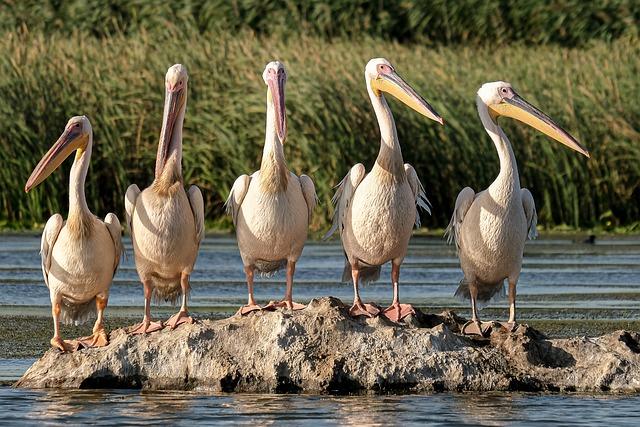- Introduction to Smart Forests
- Technology Integration in Smart Forests
- Environmental Benefits of Smart Forests
- Challenges and Solutions in Developing Smart Forests
- The Future of Smart Forests
- Conclusion
- FAQs on Smart Forests
- References
Introduction to Smart Forests
In an age of accelerating climate change, deforestation, and the loss of biodiversity, the need for environmental sustainability has never been more urgent. Enter "Smart Forests" – a groundbreaking concept that integrates cutting-edge technologies like Internet of Things (IoT), Artificial Intelligence (AI), and data analytics to monitor and manage forest ecosystems with precision.
This innovation in forest management aims not only to protect natural landscapes but also optimize them for various environmental benefits like carbon sequestration, biodiversity preservation, and even sustainable timber production. But what exactly do Smart Forests entail? In this blog post, we'll explore various elements of Smart Forests, including the technologies powering them, the positive effects on our environment, challenges faced in their adoption, and their bright prospects for the future.
Technology Integration in Smart Forests

(Image: Pixabay/@Pixies)
At the heart of Smart Forests is the integration of state-of-the-art technology that allows real-time data collection, advanced analytics, and actionable insights. These technologies include IoT sensors and satellite imaging to track changes in tree health, moisture levels, temperature, and soil conditions. Coupled with AI, these tools analyze collected data efficiently and predict potential threats like wildfires, pest invasions, or diseases before they escalate into destructive events.
For instance, sensor networks within forests provide ongoing updates on environmental conditions. Drones equipped with cameras and environmental sensors fly over dense canopies, capturing high-resolution images and thermal data that help experts understand forest dynamics on both macro and micro scales.
Moreover, blockchain technology can be applied for transparent tracking of timber trade, ensuring only legally harvested wood reaches the market. This digital path can be used to certify wood products, adding layers of accountability to forestry industries worldwide.
Data gathered from these systems feed into centralized platforms where conservationists, climate scientists, and policymakers work together to create strategies for better forest management. This amalgamation of technology offers unprecedented control over forest ecosystems and makes adapting to environmental shifts much easier.
Environmental Benefits of Smart Forests

(Image: Pixabay/@darwisalwan)
The environmental impacts of Smart Forests are profound, providing multifaceted benefits to combat the escalating environmental challenges of today. Biodiversity is a primary beneficiary, as continuous monitoring helps ensure diverse species have thriving and well-balanced habitats. Tracking animal movements and monitoring plant health will aid in safeguarding endangered species and conserving critical ecosystems.
Carbon sequestration is another crucial aspect. Forests are among the most effective tools for trapping carbon dioxide from the atmosphere, and with tailored monitoring, we can enhance this ability. By analyzing tree growth and seasonal variations, experts can calculate how much carbon a forest is storing and make well-informed decisions about afforestation or reforestation practices that will boost this benefit.
Furthermore, Smart Forests contribute to sustainable forest management by identifying areas vulnerable to illegal logging or depletion. Using data-driven models, experts protect these regions, ensuring long-term forest usability without harming the ecosystem. Forest degradation is one of the leading causes of climate change, and the use of implemented algorithms and sensors helps mitigate it effectively.
Lastly, water conservation efforts are significantly enhanced. Real-time data from sensors measuring humidity and soil moisture can signal the need for irrigation or indicate when natural moisture is sufficient, thereby helping to maintain optimal growing conditions for forest flora without depleting water resources.
Challenges and Solutions in Developing Smart Forests

(Image: Pixabay/@CDD20)
While the benefits of Smart Forests are considerable, several challenges must be addressed to fully utilize their potential. The first major challenge comes in the form of infrastructure and cost. Implementing large-scale IoT networks, acquiring drones, and maintaining advanced AI models demand significant financial investment, which many low-income countries may struggle to afford.
Another challenge involves data security and privacy issues. Collecting vast amounts of data from forest environments needs to be managed carefully. Cybersecurity is paramount in preventing intrusion from hackers who could misuse sensitive information about natural resources.
To overcome these challenges, international collaborations, government grants, and partnerships with non-profit organizations focused on environmental conservation are essential. Financial aid programs can reduce costs for poorer nations, allowing them to adopt smart technologies.
A third challenge is the initial resistance to adopting advanced digital tools in forestry, which often leans on traditional methods. Training forest personnel in technological literacy and spreading awareness about the advantages of Smart Forest implementation can help smooth this transition quickly.
The Future of Smart Forests

(Image: Pixabay/@andreiprodan_)
As industries embrace smarter, data-driven solutions, Smart Forests are positioned to play a pivotal role in the future of forestry and ecological protection. Companies all across the world are now stepping up to embed sensors deep in woodlands, creating intelligent ecosystems capable of rapid self-reporting of any environmental irregularities.
One key future development is the integration of renewable energy solutions into the picture—solar sensors and eco-friendly drones will allow minimal energy consumption and increased monitoring efficiency. When the technology catches up further, we may envision fully automated forests where AI-driven robotic foresters maintain trees around the clock.
Furthermore, countries across the world could adopt bio-digital forests as part of their global strategies to meet climate goals set by international agreements, effectively reducing carbon footprints. Governments can invest in policies promoting tech-enhanced sustainability in tree-planting initiatives, empowering both citizens and industries to practice responsible forest stewardship.
With continuous advancements in machine learning models and big data services, the future of Smart Forests looks promising and will undoubtedly play a critical role in combating deforestation and climate change.
Conclusion
Smart Forests represent a perfect blend of nature and technology. Through innovations like IoT, drones, and AI, we gain improved control over environmental conditions like deforestation and forest health. This technology ensures quicker responses to threats while having a lasting positive impact on biodiversity, carbon sequestration, and environmental wellness.
Despite challenges such as high-cost infrastructure and the need for greater investment in training, smart forests offer an innovative solution to many pressing environmental problems, standing as protectors of our planet's green future.
FAQs on Smart Forests
What are Smart Forests?
Smart Forests leverage modern technologies such as IoT, AI, and data analytics to monitor and manage environmental aspects of forests in real time, optimizing their health and addressing challenges like deforestation and forest fires.
How do IoT sensors work in Smart Forests?
IoT sensors collect data on environmental conditions (such as temperature, humidity, and soil nutrients) and transmit them to central systems where they can be analyzed for forest management decisions.
What role does AI play in Smart Forest technology?
AI helps analyze vast amounts of data gathered from sensors across forests, making predictions about potential risks (like wildfire outbreaks, pest attacks, or tree disease) and generating actionable insights for forest managers.
Can Smart Forests help reduce climate change?
Yes, Smart Forests can significantly aid in combating climate change by enhancing carbon sequestration, regulating deforestation activity, and improving biodiversity, thus contributing to climate goals.
Is the technology behind Smart Forests expensive?
Implementing Smart Forest technology can require significant upfront investment, especially concerning IoT sensors and AI algorithms. However, international collaborations and financial aids are emerging to help cover these costs.
Are Smart Forests being actively implemented?
Yes, several countries and conservation agencies are exploring or implementing Smart Forest systems, especially in regions prone to environmental degradation due to deforestation or climate change.

